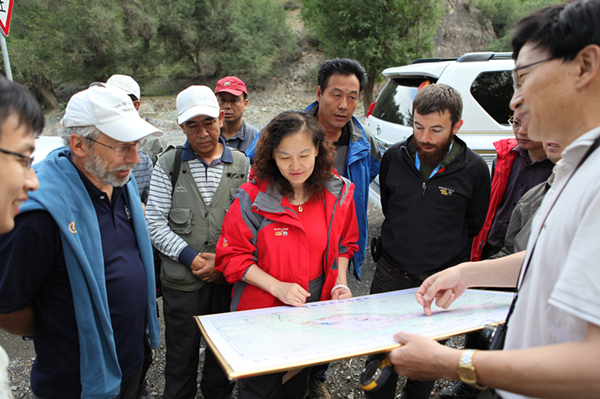

Female Scientists Stand at the Heart of the Silk Road Economic Belt
2023 marks the 10th anniversary of the Belt and Road Initiative. Xinjiang, located at the core of the Silk Road Economic Belt, is an important window for opening up to the West and plays an important role in the Belt and Road. Since 2004, YANG Zhaoping at the Xinjiang Institute of Ecology and Geography (XIEG) of the Chinese Academy of Sciences, has had a strong desire to "connect Xinjiang to the world". For 20 years, she has been striving for this goal.
As the chief scientist, YANG has established Xinjiang Tourism Academy and Xinjiang Digital Heritage and Smart Tourism Engineering Technology Research Center, successfully applied for the Xinjiang Tianshan World Natural Heritage, and built a multilingual information service platform for Silk Road digital heritage and tourism.
On May 30, 2023, the seventh National Science and Technology Worker Day, YANG Zhaoping was awarded the National Innovation Medal, an award second only to the national highest science and technology award for scientific and technological talent.
Tianshan Mountain is the largest latitude-bearing mountain system in the world. Surrounded by the vast Junggar Desert and Tarim Desert, Tianshan Mountain in Xinjiang brings together hot and cold, dry and wet, desolation and beauty, spectacular and exquisite. Its aesthetic diversity, geological diversity, and biological ecological diversity are rare in the world.
From 2009 to 2012, as the leader of the expert group, YANG Zhaoping organized top international and domestic experts to compile a series of technical reports, which were highly evaluated by experts of the World Heritage Center. They passed the assessment and inspection of IUCN experts from the World Heritage Center with "zero" error in July 2012. Tianshan Mountain in Xinjiang was officially included in the World Heritage List on June 21, 2013 during the 37th session of the World Heritage Congress. It is of great significance to guide the scientific protection and management of nature-protected areas.
Since 2013, YANG has traveled millions of kilometers, collecting digital data for world heritage sites in 54 countries such as Mongolia and Kazakhstan, as well as Russia, Turkey, Germany, Italy, France, and Spain.
The Information Service Platform of Silk Road Digital Heritage and Tourism was built and presented in languages including Chinese, English, Russian, French, German, Korean, Japanese, Spanish, containing exquisite photos, aerial panoramics, audio, and video.
The platform greatly promotes scientific, aesthetic, historical, cultural, and artistic values of 1,500 World Heritage sites and tourism resources in countries along the Silk Road, builds a digital Silk Road exhibition and experience center online and offline, and opens an important window for exchanges and integration between Xinjiang and the world.
An open and shared Silk Road heritage exhibition platform, digital tourism publicity platform, and cultural and technological exchange platform have been formed, thanks to YANG and her team's effort.
Time flies quickly, and her enthusiasm for scientific research supports YANG Zhaoping to stay at the forefront of science. XIEG provides an excellent academic research environment and technological innovation atmosphere, which supports her continuous academic innovation and brings out a leading innovative scientific research team in the field of World natural heritage research and tourism in China. YANG and her team will make greater contribution to the Belt and Road regional cooperation.

YANG Zhaoping gave a keynote presentation to the UN Heritage Experts in 2012 (Image from Tianshan World Heritage Application Office)

In July 2012, IUCN Experts visited the nominated sites of the Tianshan World Natural Heritage in Xinjiang (Image from Tianshan World Heritage Application Office)

Digital Silk Road Exhibition and Experience Center (Image from FAN Shucai)